![]()
Spotlight: Birth of a Brigade by Gary Parsons
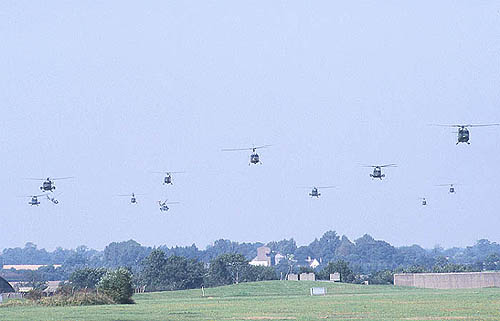 Friday 3 September 1999 saw the birth of a new Brigade
within the British Army at Wattisham Airfield, Suffolk. Nearly 10,000
will form the most powerful air manoeuvre formation in the Army's history,
16 Air Assault Brigade, which will be able to punch deep and fast into
enemy territory, radically changing Britain's ability to react rapidly
to conflicts around the globe. Soon, the Brigade will be equipped with
the Apache Longbow anti-tank attack helicopter, bringing a new level of
sophistication to the Army Air Corps.
Friday 3 September 1999 saw the birth of a new Brigade
within the British Army at Wattisham Airfield, Suffolk. Nearly 10,000
will form the most powerful air manoeuvre formation in the Army's history,
16 Air Assault Brigade, which will be able to punch deep and fast into
enemy territory, radically changing Britain's ability to react rapidly
to conflicts around the globe. Soon, the Brigade will be equipped with
the Apache Longbow anti-tank attack helicopter, bringing a new level of
sophistication to the Army Air Corps.
In front of HRH Prince of Wales
and the Defence Secretary, George Robertson, a display at Wattisham on
3 September encompassed all elements of the new Brigade, beginning with
a paradrop of troops from RAF Hercules aircraft to secure the 'battlefield'.
The scenario was to defeat the enemy position by destroying its tactical
reserve and command and control organisation, thereby seizing a tactically
important objective to block any retreat. Wattisham depicted a disused
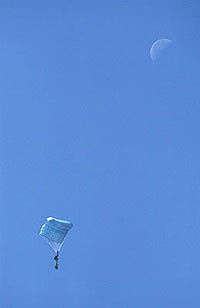 airfield defended by a
platoon of infantry, the enemy to 16 Air Assault Brigade. An impressive
air armada of Lynx and Gazelles simulating TOW missile firings followed
air attacks by Harriers and Jaguars, underlining the joint service co-operation
necessary in today's war scenarios. Ground troops and light tanks were
then brought into play by more Hercules, Puma and Chinook helicopters. The pyrotechnics display
airfield defended by a
platoon of infantry, the enemy to 16 Air Assault Brigade. An impressive
air armada of Lynx and Gazelles simulating TOW missile firings followed
air attacks by Harriers and Jaguars, underlining the joint service co-operation
necessary in today's war scenarios. Ground troops and light tanks were
then brought into play by more Hercules, Puma and Chinook helicopters. The pyrotechnics display  accompanying the 'battle' was poignant, as it was from Wattisham
sixty years ago to the day that the first bombing missions of the second
world war had been launched. Finally, a flypast by a RAF Sentry and accompanying Tornado F3s signified the air cover that would constantly
protect the ingressing forces.
accompanying the 'battle' was poignant, as it was from Wattisham
sixty years ago to the day that the first bombing missions of the second
world war had been launched. Finally, a flypast by a RAF Sentry and accompanying Tornado F3s signified the air cover that would constantly
protect the ingressing forces.
Commanded by Brigadier Peter Wall, OBE, 16 Air Assault Brigade will be the largest operational Brigade in the Army and is an amalgamation of many existing units, but principally the merging of 24 Airmobile and 5 Airborne Brigades. Main units involved in the new Brigade are numbers 3, 4 and 9 Regiment Army Air Corps and the 1st, 2nd and 3rd Battalions of the Parachute Regiment, but integral to the Brigade are combat support and combat service support units, all of which have an airborne (parachute trained) element. These consist of an Air Assault Infantry Battalion, an Artillery Regiment equipped with light guns, an Air Defence Battery equipped with high velocity missiles, a close support Engineer Regiment, a Royal Electrical and Mechanical Engineers Maintenance Battalion, a Logistic Regiment, a close support Medical Regiment, a Signal Squadron and a Royal Military Police company. A liaison officer from the RAF is also permanently assigned.
Colchester in Essex is the location
for the Brigade Headquarters, with many of the associated units being
based in the town's garrison or at nearby Wattisham Airfield. The aviation
capability is provided by 3 and 4 Regiments at Wattisham and 9 Regiment,
based at Dishforth Airfield in Yorkshire. At present all three units are
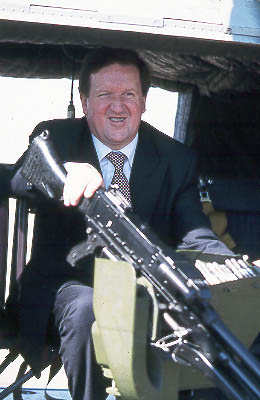 equipped with the Lynx AH7 and AH9 light battlefield helicopter and Gazelle AH1 for observation tasks, but from 2001 will
begin to re-equip with the WAH-64 Apache Longbow
attack helicopter which will provide a massive increase in capability
in both terms of firepower, communications and supportability. The Apache
carries up to sixteen laser and fire-and-forget Radio Frequency guided
long-range anti-tank Hellfire missiles for the precision engagement of
selected point targets under all weather conditions and up to seventy-six
CRV7 70mm multi-purpose rockets may be carried for the engagement of area
targets, being effective against light armour and soft skinned vehicles.
9 Regiment at Dishf
equipped with the Lynx AH7 and AH9 light battlefield helicopter and Gazelle AH1 for observation tasks, but from 2001 will
begin to re-equip with the WAH-64 Apache Longbow
attack helicopter which will provide a massive increase in capability
in both terms of firepower, communications and supportability. The Apache
carries up to sixteen laser and fire-and-forget Radio Frequency guided
long-range anti-tank Hellfire missiles for the precision engagement of
selected point targets under all weather conditions and up to seventy-six
CRV7 70mm multi-purpose rockets may be carried for the engagement of area
targets, being effective against light armour and soft skinned vehicles.
9 Regiment at Dishf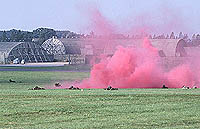 orth will be the first
operational location for the Apache, the squadrons at Wattisham receiving
their machines from 2002. A total of forty-eight Apaches will equip the
front-line units, with another nineteen undertaking training and trials.
orth will be the first
operational location for the Apache, the squadrons at Wattisham receiving
their machines from 2002. A total of forty-eight Apaches will equip the
front-line units, with another nineteen undertaking training and trials.
Created as part of the Strategic Defence Review initiated last year, the Brigade was born through a need to bring together the capabilities of the three services of the British Armed Forces. Consequently, from October the Brigade will come under the control of the Joint Helicopter Command (JHC), which oversees the operation and tasking of all Army Air Corps, Royal Navy Commando and RAF Support helicopters; a total of some 350 aircraft. JHC will maintain and value the individual ethos of the three services, but focus their joint capabilities, enhancing operational effectiveness of the battlefield helicopter and Air Assault forces.
 16 Air Assault
Brigade will replace 24 Airmobile Brigade as one of the formations assigned
to NATO's Multinational Division (Central) and will no doubt be called
into action on the many peacekeeping operations around the world. It is
required to maintain a high pool of readiness forces for the Joint Rapid
Reaction Forces (JRRF) from which a range of capabilities can be deployed
to meet contingencies:
16 Air Assault
Brigade will replace 24 Airmobile Brigade as one of the formations assigned
to NATO's Multinational Division (Central) and will no doubt be called
into action on the many peacekeeping operations around the world. It is
required to maintain a high pool of readiness forces for the Joint Rapid
Reaction Forces (JRRF) from which a range of capabilities can be deployed
to meet contingencies:
-
Deliver the Airborne Battle Group at two to five days notice to conduct early entry operations;
-
Deliver the Lead Aviation Battle Group at five to ten days notice, also providing in due course a squadron of helicopters dual roled for amphibious operations to support 3 Commando Brigade;
-
Deploy remainder of Brigade within thirty days.

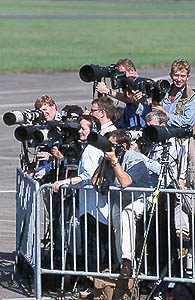 As an air manoeuvre brigade, 16 Air Assault Brigade is a unique
formation within the United Kingdom Order of Battle. It is a highly capable
and rapidly deployable brigade that offers wide potential across the operational
spectrum, being designed to secure or open points of entry for other land
or air elements and confer significant high utility combat power. As a
result, it is likely to be used frequently.
As an air manoeuvre brigade, 16 Air Assault Brigade is a unique
formation within the United Kingdom Order of Battle. It is a highly capable
and rapidly deployable brigade that offers wide potential across the operational
spectrum, being designed to secure or open points of entry for other land
or air elements and confer significant high utility combat power. As a
result, it is likely to be used frequently.
The formation of the new Brigade assures the future of the Army at Colchester and Wattisham in the next few years, and it has been a while since the latter has had such esteemed visitors. Although a mock battle was raging hard to their right, the paparazzi had no interest in the mock war, their cameras remained firmly fixed on the Prince of Wales and his two sons. An indictment to the state of our national press, I would say.